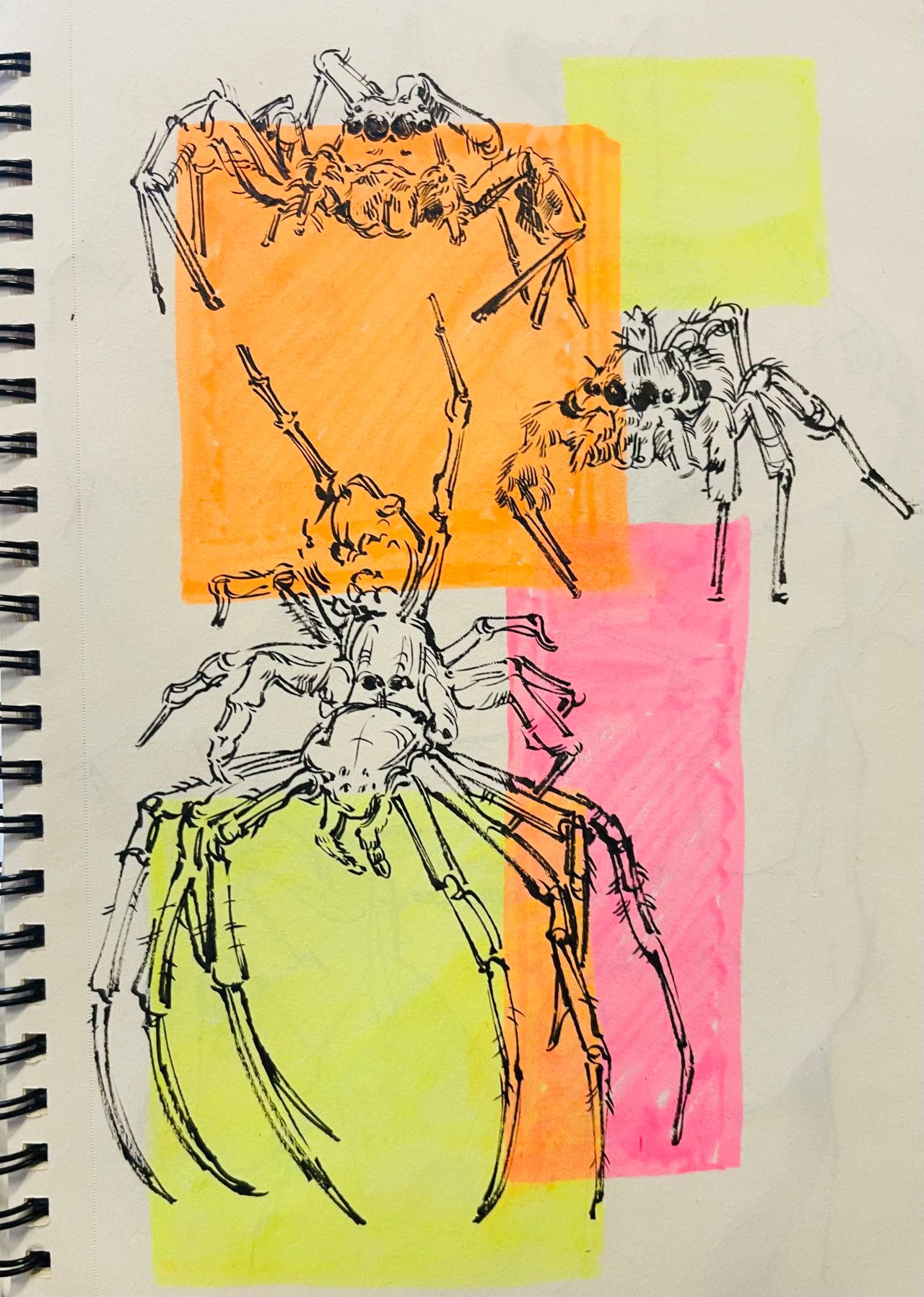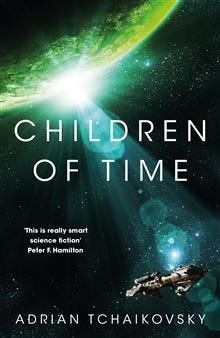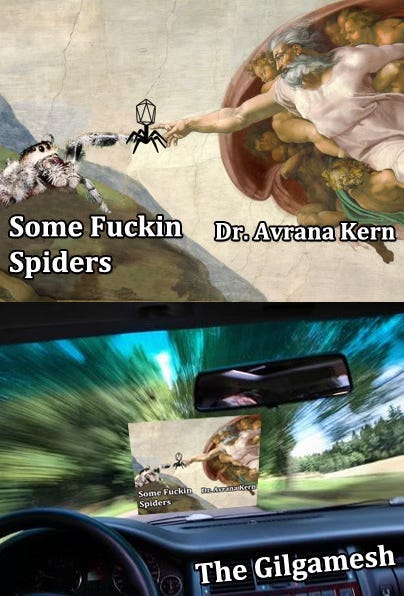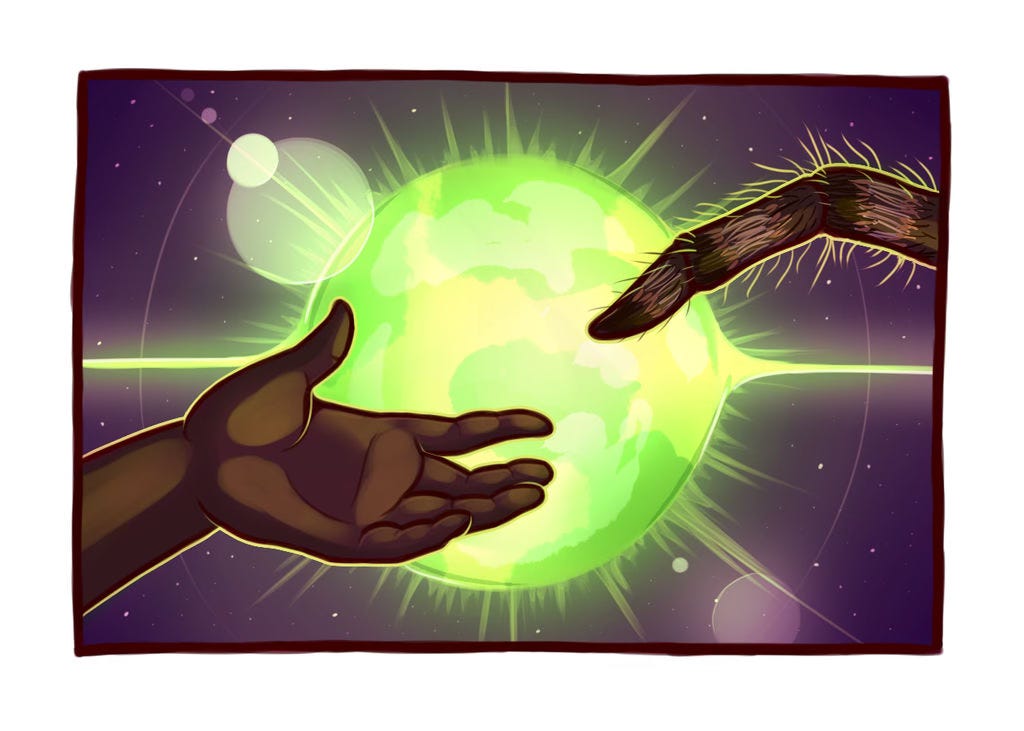Reading recco: Children of Time by Adrian Tchaikovsky
Extraordinary, evolution-based science fiction
This is an insufficient note on the book with an uneven focus on one stupendous element - nano virus enhanced spiders. Yes, that.

Despite having a lot of the typical elements — a spaceship, a runaway crew and the hunt for an inhabitable planet — the book is a welcome departure from trope-y science fiction.

The most engaging part of the book, of course, are the spiders. The author gives them names, but that’s the most anthropomorphizing he does. As readers, we quite often get the spider’s eye view of this strange new world, we witness their battles for survival, their strategising and evolution across generations.
Here’s how he introduces them:
She is Portia, and she is hunting. She is eight millimetres long but she is a tiger within her tiny world, fierce and cunning. Like all spiders, she has a body of two parts. Her small abdomen holds her book-lungs and the bulk of her gut. Her head-body is dominated by two huge eyes facing forwards for perfect binocular vision, beneath a pair of tiny tufts that crown her like horns. She is fuzzy with hair in broken patterns of brown and black. To predators, she looks more dead leaf than live prey. She waits. Below her formidable eyes her fangs are flanked by limb-like mouthparts: her palps, coloured a startling white like a quivering moustache. Science has named her Portia labiata, just another unassuming species of jumping spider.
The characters and world-building hold you by the scruff of the neck:
To travel the forest is to travel the high roads, branch to branch, each tree a world in miniature – crossing where the branches touch: now upside down, now right side up, scaling vertical trunks then leaping where the branches give out, trailing a lifeline and trusting to the eye and the mind to calculate distance and angle.
The third of her party, the male, is lower than Bianca, his legs spread out for balance as he hangs on the tree, looking downwards. Possibly he thinks he is keeping watch, but Portia feels he is probably just letting his mind wander. Too bad: she needs him. He is smaller than she; he can jump further and trust to more slender branches.
Not to forget the human characters, some of them are interesting as well — for instance, the mythical Dr. Kern who is obsessed with having entire planets in her name.
Earth had been green, in her day, though her colours had faded since. Perhaps never as green as this beautifully crafted world though, where even the oceans glittered emerald with the phytoplankton maintaining the oxygen balance within its atmosphere. How delicate and many-sided was the task of building a living monument that would remain stable for geological ages to come. It had no officially confirmed name beyond its astronomical designation, although there was a strong vote for ‘Simiana’ amongst some of the less imaginative crewmembers. Doctor Avrana Kern now looked out upon it and thought only of Kern’s World. Her project, her dream, her planet.
However, these semi-philosophical asides feel like tiny gifts to the reader, especially since we spend so much time observing spiders.
“Alpash moved to go, and for a moment Holsten was going to stop him, to ask that impossible question that historians can never ask, regarding the things they study: What is it like to be you? A question nobody can step far enough out of their own frame of reference to answer.”
It hardly does justice to all plot elements, but if there is one contemporary sci fi (hard SF?) book I would recommend, it is this one. I say, read the book for the evolution-based sci fi. You won’t mind sitting inside a rickety spaceship for half of the book because you know the Portia chapter comes next.
Here’s some more fan-art, both lovely and quirky.





